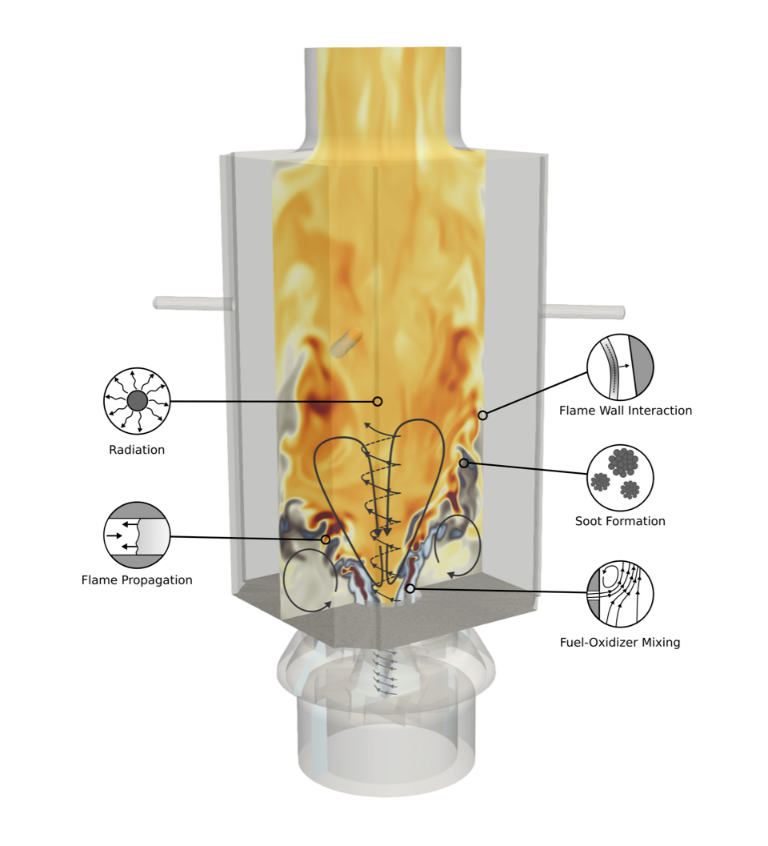Prediction of soot formation in practical applications
Short description
Soot formation is a complex phenomenon which requires the use of large chemical mechanisms not only to account for a detailed description of the small gas phase molecules but for the enormous variety of PAH. These expensive requirements have made its modelling elusive for the scientific community although acceptable results have been obtained in the last years (Yang et al. 2019, Rodrigues et al. 2018, Hoerlle and Pereira 2019). In order to increase the reliability of the simulations, a lot of work has to be done to improve PAH chemistry and their interaction with turbulence, soot modelling oxidation and simulation of particle size distribution. To sort out the difficulties that the soot solid phase introduces in the fluid mechanics simulations, the Method of Moments (MOM) (Mueller et al., 2009, Chong et al. 2019, Salenbauch et al. 2019) and the sectional model (Rodrigues et al. 2018, Hoerlle and Pereira 2019) have been used. Both methods have been coupled with flamelet combustion models providing stateof-the-art results (Rodrigues et al. 2018, Yang et al. 2019). Finally, another approach is the coupling of soot models with the Conditional Moment Closure (CMC) model for which promising results have also been obtained (Giusti et al. 2018).
Objectives
The objective of this use case is to demonstrate the predictive capabilities of Exascale simulations to provide accurate results of soot formation when applied to large-scale simulations. This ECD will narrow the gap between simulations and experiments obtaining state-of-the-art soot models and showing that satisfactory degrees of accuracy can be achieved for the prediction of an extremely complex process such as soot formation in engines.

Technologies
CLIO, OpenFOAM, PRECISE_UNS, Alya, Nek5000
Use Case Owner
Barcelona Supercomputing Center (BSC)
Collaborating Institutions
UCAM, TUD, TUE, AUTH, ETHZ

